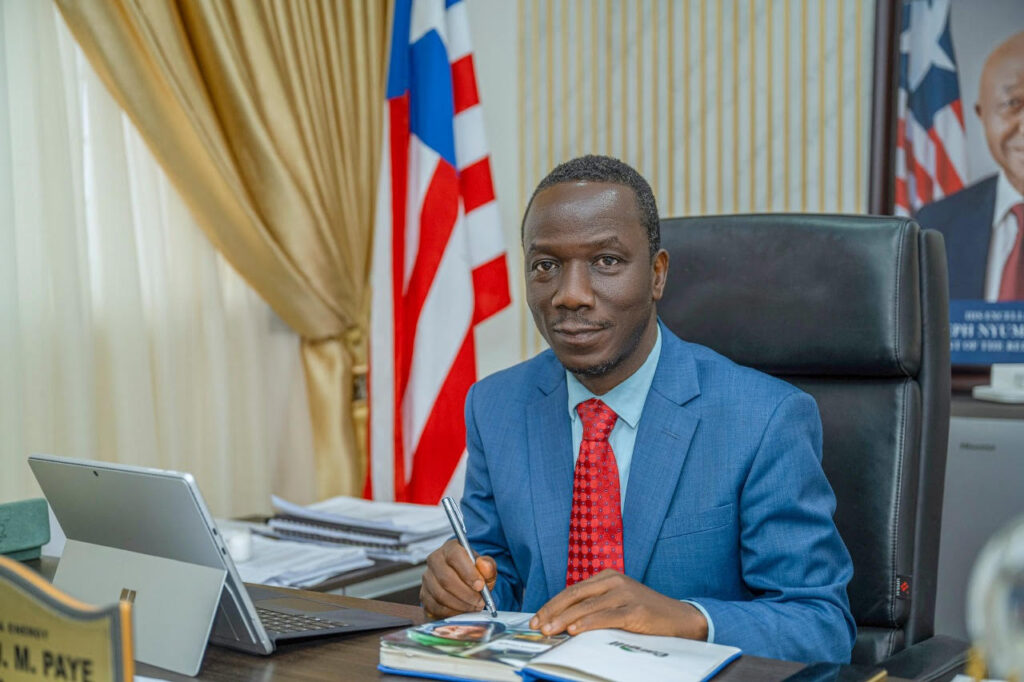“BUILDING AFRICA’S ENERGY ARCHITECTURE FOR LONG-TERM PROSPERITY-CATALYZING INDUSTRIALIZATION AND URBANIZATION VIA SUSTAINABLE ENERGY”
Your Excellences and distinguished Representatives of Governments, multilateral Organizations, Power Utilities, Private Sectors and other Actors:
On behalf of His Excellency the President, Government and People of the Republic of Liberia, I commend the Government of the Arab Republic of Egypt for hosting this 21st APUA Congress, and for the warm reception since arrival here in Cairo.
I particularly commend His Excellency Dr. Mostafa ESMAT, Minister of Electricity and Renewable Energy of this great Country for, for organizing this Event.
Liberia’s energy situation remains dire:
• Hydro (installed generation capacity) is about 88MW, which drops to zero during the Dry Season (i.e. six months of waiting for the rains to start to pour before power supplies can stabilize in Monrovia and places connected to the grid).
Note: Rainfall averages about 2,391mm (94 inches) annually.
• Thermal Plant has a capacity of 38MW but the cost is prohibitively high, at US$0.33 compared to US$0.14 according to a 2022 report.
• Cost varies by region and provider: US$0.45 per kWh in one region of the country and US$0.22 per kWh in two other regions, respectively, for two private distributors; for the Liberia Electricity Corporation (LEC), the cost is US$0.22 per kWh with US$0.15 per kWh for social tariffs.
Expanding access from 33% to about 75% by 2030 is a key goal under the ARREST Agenda for Inclusive Development—AAID—using grid and off-grid solutions.
Imports from neighboring countries (Cote d’Ivoire and Guinea-Conakry) now total about 80MW (50MW+30MW) transmitted through the Transco CLSG transmission lines, with five(5) substations built, fully energized but with no power to evacuate.
Five-pillar National Energy Compact seeks to connect 100,000 households per year up to 2030:
1) Rehabilitating and expanding power generation, transmission, and distribution network infrastructure;
2) Leveraging the benefits of increased regional integration: Under the CLSG (Cote d’Ivoire-Liberia-Sierra Leone-Guinea) network, five (5) substations have been built, fully energized;
3) Embracing Distributed Renewable Energy(DRE) and clean cooking solutions as critical elements of the access agenda;
4) Incentivizing private-sector participation to unlock additional resources: several IPP proposals are under review: IPP Steering Committee in place, appointed by the President and chaired by the Vice President of Liberia, evidence of strong political will at the highest level of leadership; and
5) Ensuring financially viable utilities that prioritize energy security and provide affordable, reliable, inclusive, sustainable and clean energy:
• We have already drafted a Net Metering Policy which will be launched along with the necessary regulations shortly;
• One policy decision made in 2024 was to transition 86.3% of all Government institutions from Postpaid Metering System to Prepaid Metering System: Over the years, LEC was unable to recover from financial losses resulting from unpaid liabilities for electricity consumed by ministries, agencies, commissions, universities, etc. With only 23 exemptions, by the end of 2026, about 145 of the 168 Government institutions will have transitioned to the Prepaid Metering System; and
• Under this policy, private solar owners will share excess energy with the grid and get credited.
Improving Energy Sector Governance: In 2024, we established an Energy Sector Working Group that meets regularly, chaired by the Ministry of Mines and Energy with membership comprising all stakeholder institutions;
Energy Information System (EIS): A website with real-time metrics on all key energy data in Liberia, all balance and indicators for Liberia (oil, biofuels and wastes, hydro, geothermal, solar, etc.); accessible remotely and can interface with other websites and systems;
Ongoing Projects:
• 20-MW solar power park to be commissioned this year;
• Expansion of Mt. Coffee Hydro capacity;
Ongoing and funded projects inadequate for meeting demand, which stands at 400MW.
While the national access goal of 75% is ambitious, it is achievable. The reason for this optimism is commitment, backed by strong political will across Government at the highest leadership level. A Compact Delivery and Monitoring Unit will be functional by January 2026.
With the Liberia Electricity Corporation targeting to connect at least 300,000 new customers, this goal is not out of reach. In fact, the investment climate has changed, with private-sector participation encouraged.




1 Comment
**mindvault**
mindvault is a premium cognitive support formula created for adults 45+. It’s thoughtfully designed to help maintain clear thinking